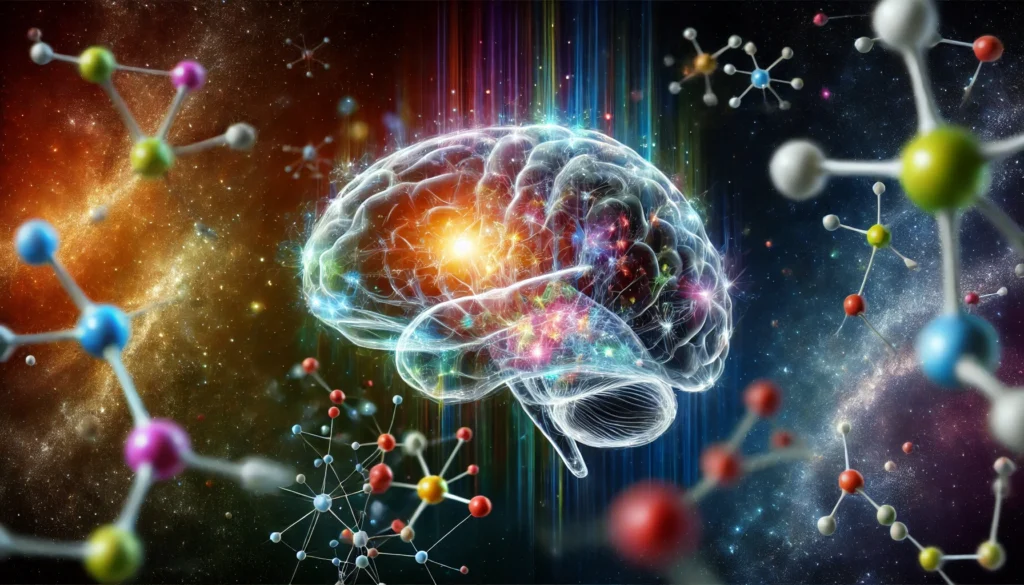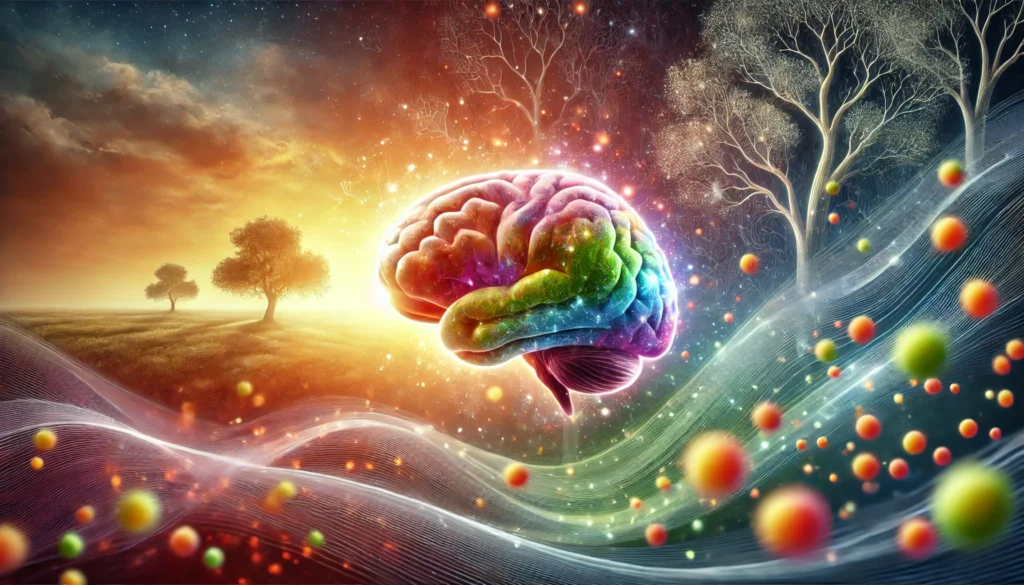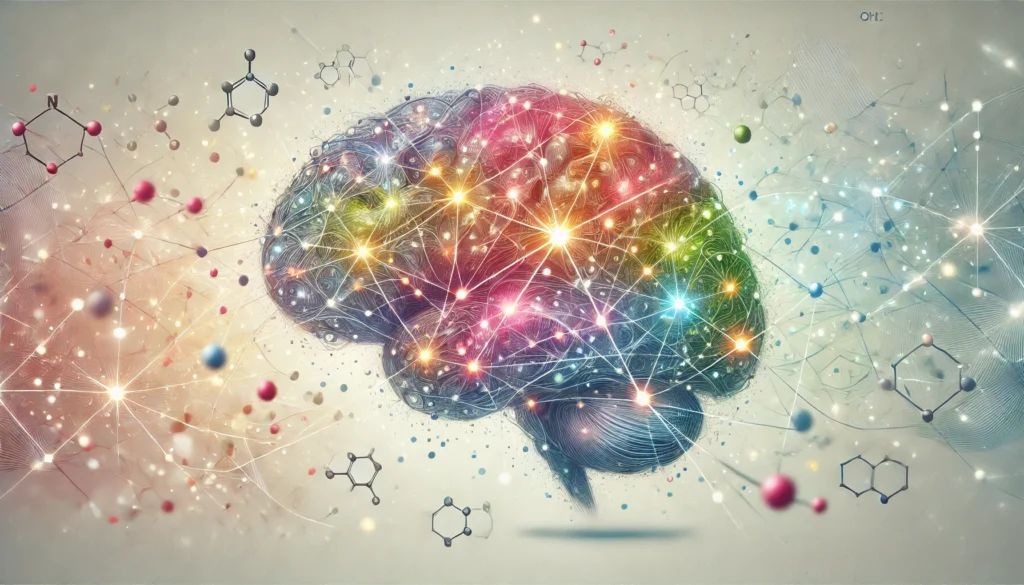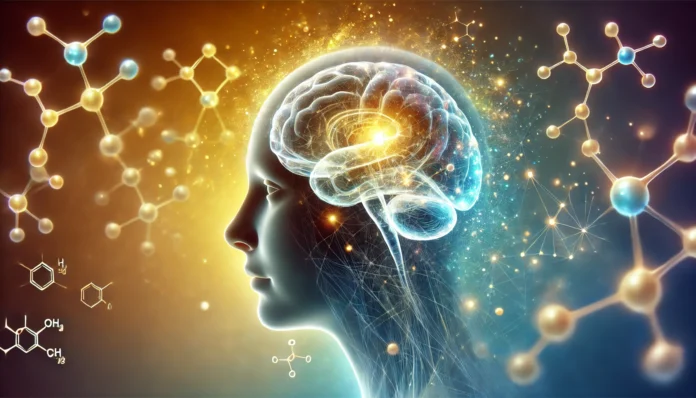Understanding the intricate relationship between brain chemistry and human cognition unveils a rich landscape of biological processes that sustain our mental clarity, emotional resilience, and long-term brain vitality. As science continues to decode the molecular machinery behind consciousness and behavior, a pressing question arises: what is brain chemistry, and how do these tiny yet powerful chemicals influence not just how we think, but how we age? This article explores the deep interconnections between brain chemicals, cognitive health, and longevity, drawing from neuroscience, psychology, and anti-aging research to offer a comprehensive look at how chemical signaling in the brain underpins our mental performance and overall well-being.
You may also like : Best Things for Brain Health: Expert-Backed Strategies to Keep Your Mind Sharp
The Foundations of Brain Chemistry: What Is Brain Chemistry?
To grasp the full implications of brain chemistry, we must first understand what it means. Brain chemistry refers to the complex interplay of neurotransmitters, neuromodulators, hormones, and enzymes that regulate brain function. These chemical messengers facilitate communication between neurons, shaping how we think, feel, remember, and learn. While electrical impulses transmit signals within neurons, brain chemicals bridge the gap between them, ensuring that messages pass seamlessly across synapses—the microscopic spaces between nerve cells.
When people ask, “What is brain chemistry?” they are usually referring to how these chemical interactions influence mental states and behavior. However, the term encompasses much more, including the regulation of mood, memory formation, sleep-wake cycles, motivation, stress responses, and even how we form habits or fall in love. It is not a single substance or event, but rather an ever-evolving biochemical symphony.
What Is Brain Chemicals’ Role in Neurotransmission?
The core function of brain chemicals lies in their ability to act as neurotransmitters—molecules that transmit signals between neurons. These chemicals are stored in vesicles within the neuron and released into the synaptic cleft in response to an electrical signal. Once released, they bind to receptors on the neighboring neuron, continuing the transmission process. Some neurotransmitters are excitatory, increasing the likelihood that the next neuron will fire, while others are inhibitory, dampening the signal.
Among the most well-known neurotransmitters is dopamine, often associated with reward, motivation, and pleasure. Serotonin plays a key role in mood regulation, appetite, and sleep. Acetylcholine is crucial for learning and memory, while gamma-aminobutyric acid (GABA) provides a calming effect by inhibiting overexcitation. Glutamate, the brain’s primary excitatory neurotransmitter, is essential for neural plasticity and cognitive development. Norepinephrine, another key player, influences alertness and the fight-or-flight response.
The Endocrine-Brain Interface: Hormones and Brain Chemistry
While neurotransmitters are localized to the synapse, hormones travel throughout the body, including to the brain. Hormonal signaling intersects with brain chemistry in profound ways, influencing cognition, mood, and aging. For instance, cortisol, often dubbed the “stress hormone,” is produced by the adrenal glands but exerts a significant impact on the brain, particularly the hippocampus, which governs memory and emotional processing.
Estrogen and testosterone also affect brain chemistry. Estrogen enhances synaptic connectivity and supports the release of serotonin and dopamine, which may explain why post-menopausal declines in estrogen are associated with increased risks of depression and cognitive decline. Testosterone, while best known for its role in physical traits and libido, also modulates aggression, motivation, and even spatial ability.

Neuroplasticity and Brain Chemicals: Rewiring the Mind
One of the most remarkable features of the human brain is its plasticity—its ability to reorganize and adapt in response to experience. Neuroplasticity is heavily influenced by brain chemicals, which determine the strength and formation of synaptic connections. For example, learning a new language or instrument stimulates the release of neurotransmitters like dopamine and acetylcholine, which enhance attention and memory consolidation.
Brain-derived neurotrophic factor (BDNF) is a neurotrophin that supports the survival of existing neurons while encouraging the growth of new ones. It acts almost like a fertilizer for the brain, promoting neuroplasticity and cognitive resilience. BDNF levels are modulated by factors such as exercise, diet, stress, and sleep. Low levels are associated with depression, Alzheimer’s disease, and cognitive decline, while higher levels correlate with improved learning and emotional stability.
Brain Chemistry and Mental Health Disorders
Disruptions in brain chemistry are at the heart of many psychiatric and neurological disorders. For instance, major depressive disorder is commonly linked to imbalances in serotonin, norepinephrine, and dopamine. Anxiety disorders often involve excessive excitatory signaling—particularly from glutamate—or insufficient inhibitory control by GABA.
In conditions like schizophrenia, dopamine dysregulation plays a central role, particularly in the overactivation of certain brain regions. Bipolar disorder involves complex fluctuations in neurotransmitter levels, which mirror the oscillations between manic and depressive states. Alzheimer’s disease is marked by declines in acetylcholine and the accumulation of toxic amyloid plaques, which interfere with neurotransmission.
Cognitive Enhancement and Longevity: Optimizing Brain Chemistry Naturally
As interest grows in optimizing brain function for both performance and longevity, researchers are exploring how lifestyle interventions can naturally enhance brain chemistry. Regular physical exercise, for instance, stimulates the release of dopamine, serotonin, and BDNF, offering neuroprotective benefits that extend well into old age. Aerobic activities like running or cycling are especially effective in boosting executive function, memory, and mood.
Nutrition also plays a vital role. Omega-3 fatty acids found in fish support membrane fluidity and neurotransmitter function, while antioxidants from fruits and vegetables combat oxidative stress. Nutrients such as magnesium, zinc, and B vitamins act as cofactors in neurotransmitter synthesis and regulation. A Mediterranean-style diet has been consistently linked to improved cognitive outcomes and reduced risk of dementia.
The Aging Brain: How Brain Chemicals Shift Over Time
Aging brings inevitable changes to brain chemistry. Levels of key neurotransmitters such as dopamine, acetylcholine, and serotonin naturally decline, contributing to slower information processing, memory lapses, and reduced emotional regulation. The brain’s ability to synthesize and recycle these chemicals diminishes, leading to a state of reduced neurochemical efficiency.
Moreover, hormonal shifts—such as reductions in estrogen, testosterone, and growth hormone—further alter brain chemistry, impacting mood, cognition, and motivation. The blood-brain barrier becomes more permeable with age, allowing inflammatory molecules to enter the brain and disrupt its chemical milieu. This chronic low-grade inflammation, or “inflammaging,” has been linked to neurodegenerative diseases and cognitive decline.

Modern Tools for Measuring Brain Chemistry
Advancements in neuroimaging and molecular biology have revolutionized our ability to study brain chemistry in living humans. Techniques like positron emission tomography (PET) and magnetic resonance spectroscopy (MRS) allow scientists to observe the distribution and activity of neurotransmitters in real time. Functional MRI (fMRI) further enhances our understanding by showing how brain regions activate in response to different stimuli, which can be correlated with chemical changes.
These tools have not only expanded our knowledge of what brain chemicals do but have also opened doors for early detection of mental health disorders and neurodegenerative diseases. For example, reduced dopamine transporter activity on PET scans may signal early Parkinson’s disease. Similarly, altered glutamate levels in specific brain regions may serve as biomarkers for mood disorders or epilepsy.
What Is Brain Chemistry’s Role in Social and Emotional Intelligence?
While we often think of brain chemicals in terms of individual cognition and mood, they also play a vital role in shaping our interpersonal behaviors. Oxytocin, sometimes called the “love hormone,” enhances bonding, trust, and empathy. It’s released during social interactions, physical touch, and even eye contact, reinforcing prosocial behaviors that are essential for healthy relationships and community building.
Vasopressin, another hormone involved in social behavior, contributes to pair bonding and aggression regulation. Dopamine and serotonin levels also influence how we perceive social rewards and punishments. In individuals with social anxiety or autism spectrum conditions, alterations in these neurochemical systems can lead to difficulties in interpreting social cues or responding appropriately to social feedback.
Frequently Asked Questions: Exploring Brain Chemistry and Cognitive Longevity
1. How does chronic stress reshape brain chemistry in the long term?
Chronic stress initiates a cascade of neurochemical changes that alter brain function and structure over time. One of the most significant shifts involves the overproduction of cortisol, which can reduce the sensitivity of receptors for key neurotransmitters like serotonin and dopamine. This impairs emotional regulation and may increase susceptibility to depression or anxiety. What is brain chemistry if not a delicate balance? Long-term stress disrupts this balance, leading to impaired neuroplasticity and even shrinkage in brain regions like the hippocampus. Understanding what brain chemicals are most affected by stress—such as norepinephrine and glutamate—can inform strategies to buffer these effects through lifestyle interventions or therapeutic support.
2. Can digital technology impact the brain’s chemical landscape?
While the relationship between screen time and brain function is still being fully mapped, emerging research suggests that frequent digital engagement influences neurotransmitter patterns, particularly dopamine. The rapid, high-reward nature of social media and gaming can overstimulate reward pathways, reshaping what brain chemicals are released in response to everyday stimuli. This shift can reduce sensitivity to natural sources of pleasure, leading to issues like digital addiction or attention fragmentation. From an EEAT perspective, digital overstimulation highlights how environment sculpts neurochemistry. Exploring what brain chemistry means in the digital age is crucial as we develop healthier tech habits that support long-term mental clarity.
3. How do traumatic experiences rewire brain chemistry differently from ordinary stress?
Trauma, especially when experienced in early life, leaves a deeper imprint on brain chemistry than ordinary stress. Traumatic memories become encoded via heightened amygdala activity, reinforced by intense surges in neurotransmitters like norepinephrine. Over time, this can recalibrate the hypothalamic-pituitary-adrenal (HPA) axis, altering the baseline levels of cortisol and other stress-related chemicals. What is brain chemistry doing in these moments of trauma? It’s reacting protectively—but these adaptations can later hinder emotional regulation and cause persistent hypervigilance or dissociation. Understanding what brain chemicals underlie trauma can inform more precise, trauma-informed therapeutic models, such as EMDR or neurofeedback.
4. What role does gut health play in influencing brain chemistry?
The gut-brain axis has emerged as a compelling frontier in neuroscience, revealing how the microbiome regulates mood, cognition, and immunity. Gut bacteria produce neurotransmitter precursors like tryptophan, which is essential for serotonin synthesis. What is brain chemistry if not partly rooted in digestion? A dysbiotic gut environment can reduce serotonin availability and increase inflammation, disrupting neurochemical balance. Certain strains of probiotics have been shown to boost GABA activity or lower cortisol levels, demonstrating that dietary adjustments can modulate what brain chemicals are being produced. Optimizing gut health may become a cornerstone of holistic mental wellness approaches.
5. Are there gender differences in brain chemistry that affect cognitive performance?
Yes, there are well-documented gender-based variations in how brain chemistry operates, influenced largely by hormonal fluctuations. Estrogen enhances the activity of neurotransmitters like serotonin and acetylcholine, which support memory and emotional processing, especially in the prefrontal cortex. In contrast, testosterone can increase dopamine availability, which may bolster spatial ability and goal-directed behavior. These differences don’t determine intelligence but rather reflect nuanced cognitive strengths. What is brain chemistry if not personalized by biology? Recognizing how hormones shape what brain chemicals are dominant at different life stages can lead to more tailored mental health and cognitive optimization strategies for men and women.
6. How do psychedelic compounds influence brain chemistry beyond the immediate experience?
Psychedelics like psilocybin and LSD work by modulating serotonin receptor activity, particularly the 5-HT2A subtype, which alters perception, cognition, and mood. Interestingly, the effects extend beyond the immediate trip. Neuroimaging studies show increased neural connectivity and the suppression of the default mode network (DMN), often associated with rumination. What is brain chemistry undergoing during and after these experiences? A temporary loosening of rigid thought patterns and an increase in neuroplasticity. These changes can linger for weeks, potentially offering relief from depression, PTSD, or anxiety. Understanding what brain chemicals are being modulated in these altered states helps researchers refine therapeutic models and improve treatment outcomes in psychedelic-assisted psychotherapy.
7. Can brain chemistry explain individual differences in creativity and innovation?
Creativity is closely linked to dopaminergic activity in the brain’s mesolimbic pathway, as well as the ability to fluidly switch between different neural networks. Individuals with higher baseline dopamine or more flexible dopamine receptor function often excel in divergent thinking tasks. What is brain chemistry contributing in this context? A neural environment that allows for non-linear associations, pattern recognition, and openness to novelty. Beyond dopamine, neurotransmitters like norepinephrine enhance cognitive flexibility during periods of high arousal. When we investigate what brain chemicals are behind innovation, we find a complex, dynamic matrix that supports imagination, focus, and intuition in concert.
8. How does multilingualism alter the brain’s chemical and cognitive architecture?
Learning and using multiple languages strengthens neural connectivity and enhances executive function by constantly engaging attention-switching and memory systems. This linguistic juggling acts as a cognitive workout, promoting the release of neurotransmitters like acetylcholine and dopamine. What is brain chemistry doing in multilingual individuals? It’s adapting to efficiently manage competing language systems, which leads to greater cognitive flexibility and even a delay in dementia onset. Understanding what brain chemicals are elevated through multilingualism can inform educational strategies and underscore the cognitive benefits of lifelong language learning.
9. Are there futuristic methods emerging to monitor or adjust brain chemistry in real time?
Yes, the intersection of neuroscience and technology is giving rise to wearable neurotech capable of detecting subtle changes in brain activity and chemistry. Devices equipped with EEG sensors can now track electrical patterns and, indirectly, infer shifts in neurotransmitter dynamics. What is brain chemistry becoming in this future? A quantifiable, actionable dataset. Some startups are exploring closed-loop systems where neurofeedback and non-invasive stimulation can modulate what brain chemicals are released, potentially enhancing mood, focus, or sleep. Though still in its early stages, this represents a paradigm shift toward personalized, real-time mental health management.
10. How can caregivers support healthy brain chemistry in individuals with cognitive decline?
Caregivers play a crucial role in stabilizing neurochemical environments for individuals with dementia or other forms of cognitive impairment. Structured routines, emotional consistency, and cognitively stimulating activities can help maintain neurotransmitter balance. What is brain chemistry doing in these settings? It’s attempting to preserve function in the face of neurodegeneration, and supportive environments can enhance this effort. Music therapy, tactile stimulation, and reminiscence-based interventions have all shown promise in boosting dopamine and oxytocin levels. By understanding what brain chemicals are most vulnerable in aging populations, caregivers can create enriched environments that promote dignity, engagement, and quality of life.

Conclusion: Unlocking Brain Chemistry for a Healthier, Longer Life
As we’ve explored, brain chemistry is not just a buzzword—it is the intricate foundation of who we are. Understanding what brain chemistry is involves appreciating the delicate balance of neurotransmitters, hormones, and neuromodulators that orchestrate every thought, feeling, and decision. These chemicals govern not only our moment-to-moment experiences but also influence how we age, how resilient we are to stress, and how well we maintain cognitive clarity into our later years.
Appreciating the complexity of what brain chemicals are and how they work allows us to take informed steps toward optimizing brain health. Whether through nutrition, exercise, sleep hygiene, mindfulness, or medical interventions, supporting healthy brain chemistry offers a pathway to enhance both cognitive function and emotional well-being.
neurotransmitters and mental health, cognitive longevity strategies, brain chemical imbalance, natural ways to boost dopamine, serotonin and mood regulation, neuroscience of aging, brain plasticity and learning, hormonal effects on cognition, gut-brain axis health, lifestyle for brain health, mental performance optimization, emotional regulation and the brain, stress impact on cognition, BDNF and neuroplasticity, brain aging prevention, healthy brain habits, memory and neurotransmitters, dopamine and motivation, sleep and cognitive function, nutrition for mental clarity
Further Reading:
Exploring Brain Chemicals in Depression
Disclaimer
The information contained in this article is provided for general informational purposes only and is not intended to serve as medical, legal, or professional advice. While Health11News strives to present accurate, up-to-date, and reliable content, no warranty or guarantee, expressed or implied, is made regarding the completeness, accuracy, or adequacy of the information provided. Readers are strongly advised to seek the guidance of a qualified healthcare provider or other relevant professionals before acting on any information contained in this article. Health11News, its authors, editors, and contributors expressly disclaim any liability for any damages, losses, or consequences arising directly or indirectly from the use, interpretation, or reliance on any information presented herein. The views and opinions expressed in this article are those of the author(s) and do not necessarily reflect the official policies or positions of Health11News


